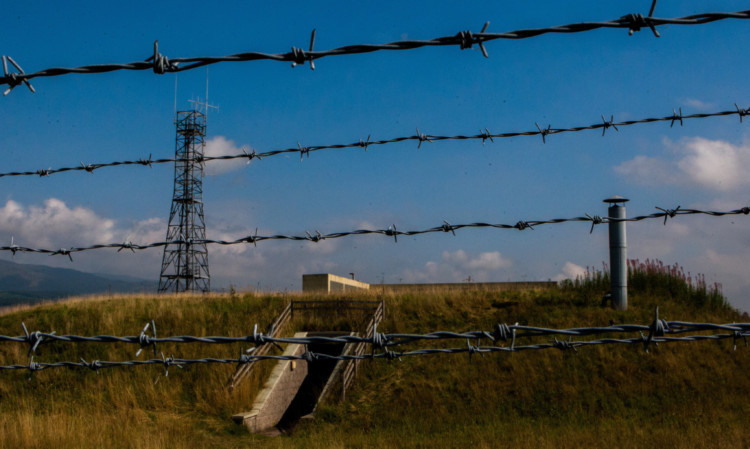In under two weeks the hammer will come down on one of Scotland’s most intriguing Cold War buildings.
The bunker at Cultybraggan Camp near Comrie was built to protect Scotland’s leaders from nuclear threat.
It cost more than £30 million to build and comes equipped with a staggering list of facilities, including a television studio.
But the property is expected to sell for as little as £200,000 when it goes up for auction in Edinburgh on March 27.
Completed in 1990, just as the Cold War was ending, the bunker would have been the national centre of command in the event of a nuclear attack.
It is thought to be the last of its kind built in Britain and boasts a TV studio, canteen, phone exchange and dormitories, as well as decontamination showers, a PA system and radio mast. It is also served by an impressive array of life-support systems, from air filtration plants and backup generators to water storage tanks.
Those specifications give some indication of the building’s scale, offering potential investors around 26,000 sq ft and 50 rooms.
In early 2012 it looked likely that the bunker would become home to Scotland’s first high-security data centre, only for the sale to fall through.
The Comrie Development Trust continued to market the property, without success, and the asking price now represents a fraction of its build cost.
Its sale will nonetheless help to raise vital funds for the trust, which has been developing the former prisoner of war camp as a community resource since buying it from the Ministry of Defence.
Darryl Cormack, head of corporate sales at Future Property Auctions, said the bunker was an unusual property to put under the hammer.
“The most interesting thing is the BBC room, which would have been used to control what’s aired post-nuclear war.
“I expect there to be a great deal of interest from people who like history but also from people who have commercial uses in mind. It is ideal for data storage as sun flares can’t penetrate the bunker.”
